“Our brand isn’t inspired by Microsoft or SAP, we’re inspired by Disney.”
I read this quote by Colin Fleming, SVP of Global Brands, Salesforce. I was a bit surprised and intrigued by this quote coming from a pure B2B company like Salesforce. So, I dug deeper and developed this fascinating case study of B2B brand building by Salesforce.
Let’s dive in.
The #1 CRM Company
Founded in 1999, Salesforce is an American cloud-based software company, that provides CRM (Customer relationship management) solutions. Headquartered in San Francisco, Salesforce pioneered the SaaS (Software as a Service) model. It went public in 2004 and hit $1B revenue by 2009.
Today it is the fastest growing among top five enterprise software companies with $26.5B in revenue in FY22 (~25% Y/Y). The B2B software company has achieved profitable growth by consistently outperforming its competitors and is No. 1 CRM company for several years in a row.

Since 2014, growth of Salesforce has been outstanding.
But what makes Salesforce achieve such fast growth?
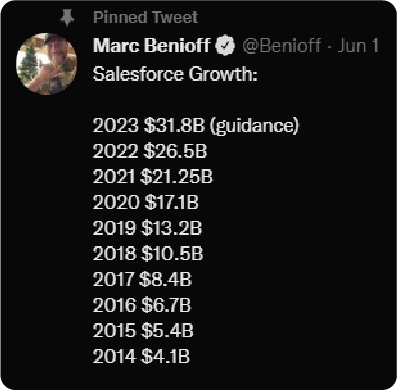
Salesforce has a unique approach to brand building
Salesforce narrates its brand story with the help of mascots. Since 2014, they have created different mascot characters that represent different aspects of their business. Salesforce ‘Universe’ today has over ten characters that are representative of customer success to salesforce architects. While, the lead character, Astro is the personification of Salesforce company, for example Codey the bear is representative of the salesforce developers.
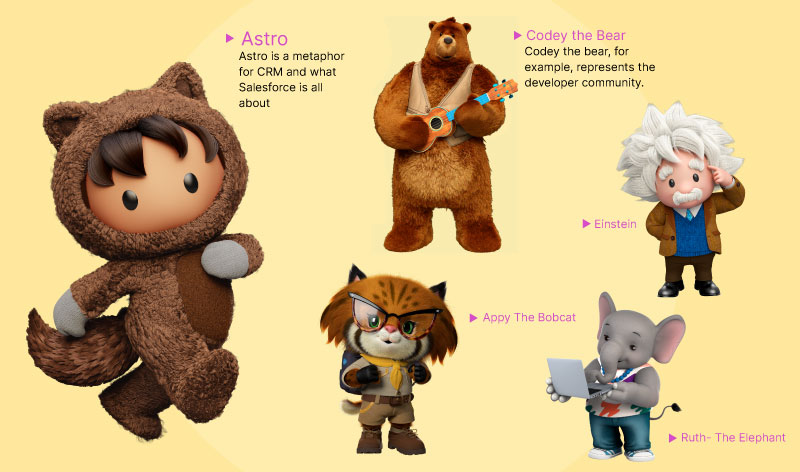
How is this approach different?
For B2B business, associating their brand with funny animal characters roaming in the forest is unthinkable. Every B2B brand is by design formal & serious. This is where Salesforce saw the opportunity to develop distinctive brand assets through animal characters that are relatable & memorable.
These characters bring a bit of liveliness and differentiation to the Salesforce brand. Since adopting new look-and-feel and the characters, Salesforce numbers have nearly doubled.
How it all began?
When Salesforce team was looking to transform their brand in 2014-15, the character of Astro was already present in their learning platform called Trailhead.
The team spotted the opportunity when they noticed how much the Astro & other characters were loved by the community, customers were wearing Astro badges on their sweaters & backpacks. They quickly realized that these characters could be a big part of the brand story.
Astro in turn came into being as a graphic on T-shirts to be given to participants of a developer conference. In 2014, Dom Buxton, VP & creative director was the only creative and her team were looking to present a cool T-shirt to all the participating developers. Inspired by MTv’s moon landing graphic concept, she made about dozen T shirt designs, but the one that was adored by the community had an Astronaut graphic – and Astro was born.
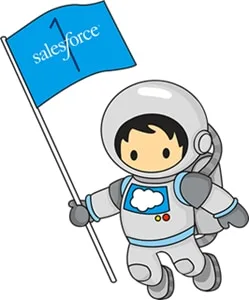
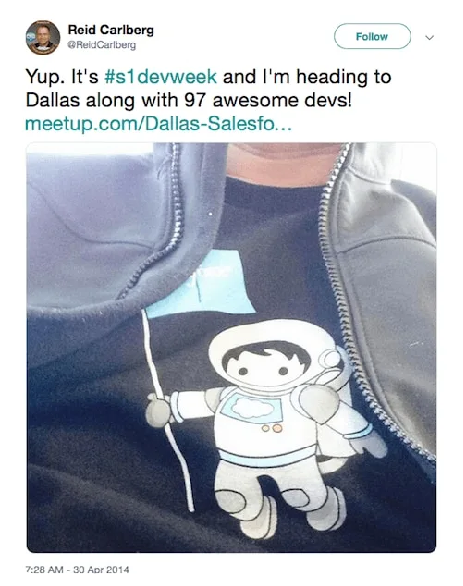
The cast of characters star in all Salesforce communications
Be it social media, developer conferences, Ad campaigns or websites, Astro and his friends are heroes of the story Salesforce wants to narrate. Being distinctive brand assets, they facilitate people to seamlessly connect any communication story to Salesforce brand in a relatable way.

Astro to the rescue
Few years ago, Salesforce identified an unique brand problem.
People were aware of Salesforce, but they had no idea what it actually did.
In other words people were not thinking about Salesforce brand in actual buying situations, they had just heard about the brand(Awareness). Awareness is helpful but what you really want is people to think of your brand when they are ready to shop. Also known as mental availability or salience, it is critical as it moves your brand into purchase consideration list.
Born out of this insight is the Trailblazers campaign where Salesforce set out to explain what it actually did.

For this campaign Astro became the bridge that connects companies and customers. Had it been just the Salesforce logo that is trying to connect, the campaign could not have been so impactful.
Mascots enrich Salesforce community experience
Another lever that Salesforce pulls to its advantage is its strong community of developers, customers, and partners. Apart from starring in campaigns, mascots also provide a sense of belongingness among the community members and they are the badge of pride for people learning Salesforce skills.
Trailblazers community
Salesforce defines Trailblazers as people from different walks of life who deliver success in a variety of roles. The community of Trailblazers forms the heart & soul of Salesforce. They are identified by another signature brand asset, the iconic Trailblazer black hoodie.

Dreamforce Conference
Dreamforce is the largest software conference in the world held annually for Salesforce customers, developers, partners and employees.

Mascots & hoodies add to the magical experience of the these conferences.
Trailhead
The Salesforce learning platform where one can learn in-demand skills, join the global community of Trailblazers and demonstrate expertise to employers for free. Trailhead program is totally driven by Astro and his friends who make the learning a fun experience.

Salesforce sends badges after completion of steps in the Trailhead playground of courses and earning these badges has become a matter of pride.
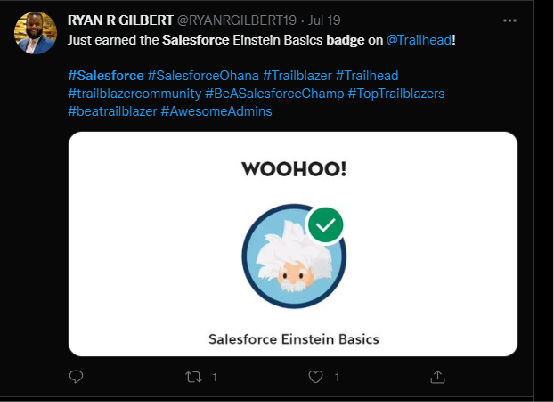
Why Mascots work
Mascots and other distinctive assets are crucial to getting noticed, recognized & chosen more often in the competitive scenario. Here’s why mascots are so effective for a brand.
- With adorable characters, a brand can make deeper emotional connection with the customers that can’t be copied.
- Characters can be adapted to different human situations to tell engaging stories on brand
- Characters like Astro make it easy for people to relate any campaign instantly to Salesforce, a brand without the mascot may struggle to do so.
Key learnings
Challenge norms – Salesforce has shown that B2B brands can be lively as well against established norms of serious & formal disposition.
Develop distinctive brand assets – Besides logo & tagline, brands can identify other ownable assets and develop it further as a competitive advantage.
Brand awareness is not equal to mental availability – Evidence based marketing has shown us that it’s critical for a brand to be thought of in actual buying situations.
Building Community – Even if the brand is online, it is essential to build a community of loyal fans by helping them to achieve their goals.
Case study by Sanath Kumar JH. Reach me at sanath@socioactiv.com

